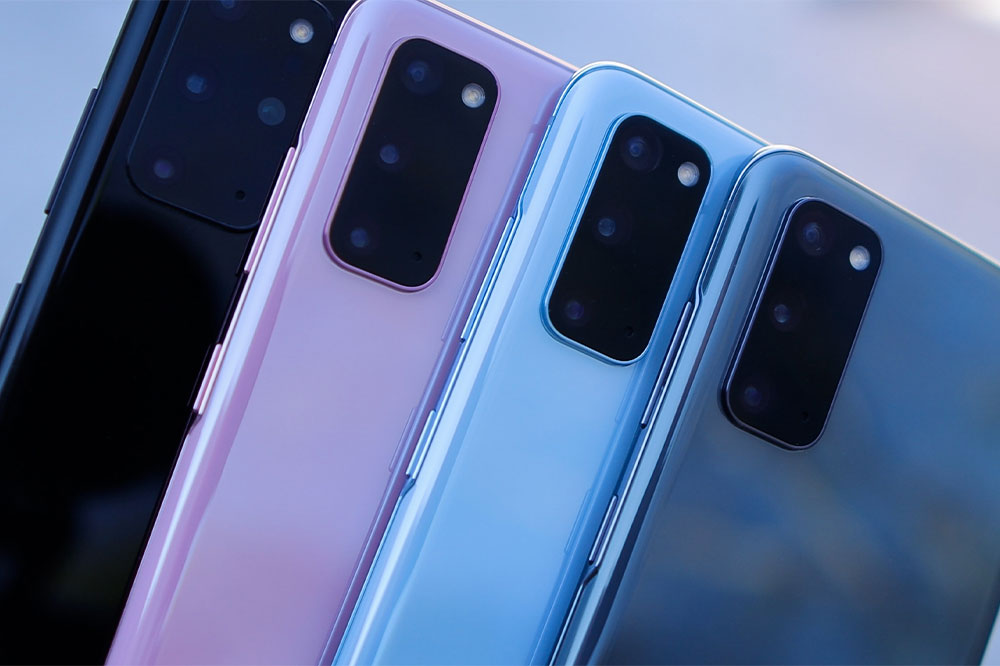Essential Tips to Avoid Common Mistakes When Purchasing a Smartphone
This comprehensive guide helps consumers avoid common mistakes when purchasing a smartphone. It emphasizes broadening brand choices, aligning features with personal needs, conducting thorough research, and avoiding impulsive decisions influenced by marketing. The article provides detailed insights into choosing the right display size, storage options, and balancing price with quality. Making an informed decision ensures long-term satisfaction and value from your new device, whether you're upgrading or buying your first smartphone. Stay vigilant, and select the perfect device tailored to your lifestyle.

Smartphones have become integral to modern daily life, serving as communication tools, entertainment devices, and productivity boosters. With the rapid development of mobile technology, choosing the right smartphone can be a daunting task, especially given the vast array of brands, models, and features available on the market today. Many consumers make mistakes that can lead to dissatisfaction, wasted money, or the inability to fully utilize their devices. To help you make a well-informed purchase, this comprehensive guide highlights the common pitfalls to avoid when buying a new smartphone and offers actionable advice to ensure your investment aligns with your needs and preferences.
Understanding the Market: The Temptation of Popular Brands
One of the biggest misunderstandings consumers have is the tendency to exclusively focus on well-known brands such as Apple, Samsung, or Google. While these brands are trusted for their quality and innovation, limiting your options can cause you to overlook other reputable manufacturers offering compelling features at more competitive prices. For example, brands like OnePlus, Xiaomi, Oppo, and Huawei have gained recognition for delivering high-performance smartphones that often come with advanced technology and better value for money.
It's important to consider the pros and cons of different brands and explore their offerings based on technical specifications, after-sales service, and user reviews rather than relying solely on brand reputation. Devices from less mainstream brands may provide comparable or even superior hardware components, longer battery life, or specialized features tailored to specific needs such as gaming or photography. Therefore, broadening your search can help you find a device that offers the best overall experience without inflating your budget.
Reconsidering the Need for the Latest Model
Market releases of flagship smartphones happen frequently, with manufacturers unveiling new models almost annually. However, upgrading to the newest device isn't always justified. The latest model might offer marginal improvements over previous versions, which may not significantly impact your daily usage. For example, an upgraded camera system or a slight performance boost might not warrant the expense if your current phone still functions well and meets your needs.
Before purchasing, evaluate whether your existing device can still serve you effectively. Focus on the core features that matter most to you, such as camera quality, battery life, processing speed, or software support. Sometimes, sticking with an older model is a smarter decision, especially if it provides all the functionalities you require. Remember, the latest doesn't always mean the best choice for every consumer.
Matching Your Smartphone to Your Personal Usage Patterns
Each individual uses their smartphone differently. Some prioritize photography, while others need devices with powerful gaming capabilities or robust productivity features. Understanding your primary use cases can significantly influence your choice of a device. For instance, if you are an avid photographer, selecting a smartphone with a high-quality camera system, multiple lenses, and advanced image processing capabilities should be a priority.
Similarly, if your work involves video editing or content creation, look for models with high-resolution displays, ample RAM, and strong processing performance. For casual users, a device with standard features may suffice. By aligning your purchase with your routines and expectations, you ensure your smartphone serves as a helpful tool rather than a source of frustration.
Conducting Thorough Research: The Key to Smarter Purchases
Impulse buying is common in today’s fast-paced consumer environment, often driven by aggressive marketing campaigns and promotional offers. To avoid buyer's remorse, dedicate time to researching various models before making a final decision. Utilize reputable tech review sites, user feedback, and detailed specifications to gather a comprehensive understanding of each device’s strengths and weaknesses.
Pay attention to real-world performance benchmarks, battery life tests, camera sample photographs, and software update policies. These insights will help you compare devices more objectively rather than relying solely on marketing hype or promotional discounts. Planning your purchase based on well-rounded knowledge ensures you select a smartphone that delivers lasting satisfaction.
Display and Storage: Critical Factors for User Experience
When selecting a smartphone, consider the display size and quality that best fit your lifestyle. If you watch a lot of videos or play games, a larger, high-resolution display will enhance your experience. Conversely, if you prefer compact devices for easier handling, opt for smaller screens without compromising on clarity or touch responsiveness.
Storage capacity is equally vital, especially for users who store many photos, videos, music, or install numerous apps. Some phones come with fixed internal storage, which can fill up quickly. If possible, choose models with expandable memory options, such as microSD card support, or larger built-in storage to future-proof your device and avoid inconvenience.
Beware of Promotional Influence and Social Media Trends
In the era of social media, influencer endorsements and marketing campaigns significantly influence consumer decisions. While these can highlight interesting features or benefits, they may also be misleading or exaggerated. Instead of falling for flashy advertisements, rely on authentic user reviews, peer feedback, and technical specifications to make a balanced decision.
Read multiple perspectives and seek honest opinions from real users who have similar needs. This research approach minimizes the risk of buyer's regret and ensures you select a device that delivers the promised performance and value.
Pricing and Accessories: Balancing Cost and Quality
Budget constraints are a common consideration, but cutting costs at the expense of quality can result in a less satisfying experience and reduced device longevity. Consider investing slightly more if it means acquiring a smartphone with better features, durability, and software support. Remember, quality devices tend to provide better security updates, longer lifespan, and higher resale value.
When it comes to accessories, avoid unnecessary add-ons during promotional sales unless they genuinely meet your needs. Often, these accessories, such as cases, screen protectors, or chargers, can be purchased separately at a lower cost and with more tailored options. Focus on essential accessories that actually enhance your usage experience rather than impulse buys driven by promotional bundling.
In Summary: Making an Informed and Confident Purchase
Choosing the right smartphone involves a combination of research, self-awareness of your usage needs, and careful evaluation of available options. Avoid common mistakes such as limiting yourself to popular brands, buying the latest model without necessity, ignoring storage or display needs, and being swayed solely by marketing gimmicks. By taking the time to plan your purchase, you can find a device that offers the best value, fits your lifestyle, and provides satisfaction for years to come.
Remember, a well-chosen smartphone is not just a status symbol but a reliable tool that complements your daily activities, enhances productivity, and keeps you connected. Approach the process with patience and confidence, and your next purchase will be a decision you won't regret.





